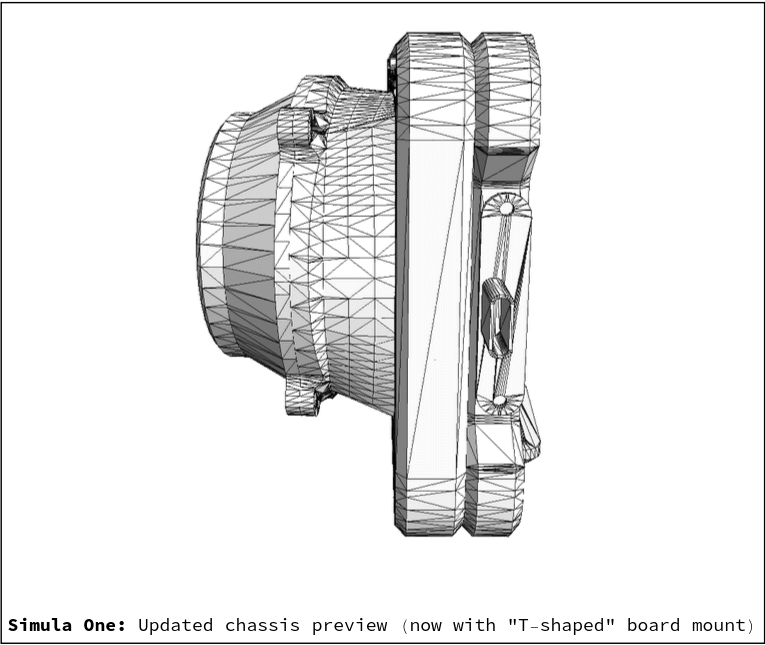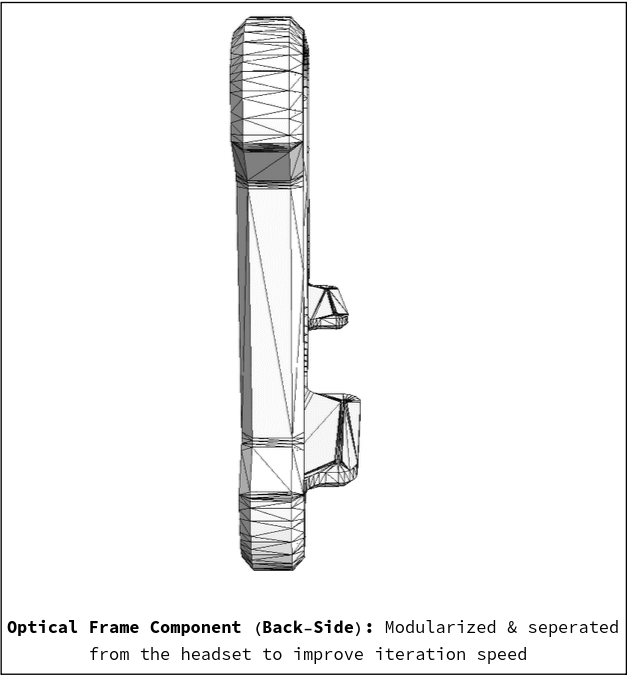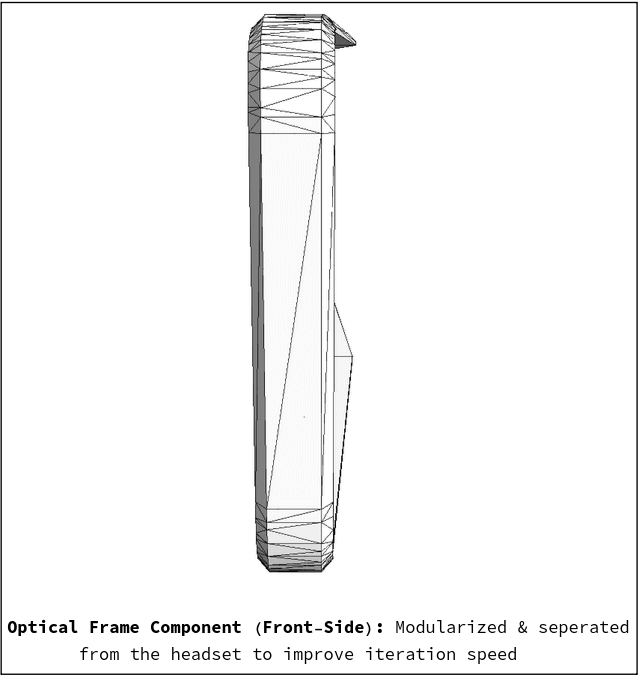We've made some improvements to our exterior headset chassis:

Updates include:
- Optimized PCB geometry to prepare for FPGA integration (via "T-Shape" design). Our VXR and FPGA boards are now going to be placed on the "T"-shaped mount shown on the rendering above. This maximizes the usable surface area for PCB mounting without interfering with our IPD system. This has been a real challenge since the surface area of the "T" is about 3,900mm2 (for reference, a typical credit card is about 4,600mm2).
- Skeletonized frame to reduce weight. With a better understanding of our electronic requirements, we were able to flesh out exactly where structural reinforcement is needed in our chassis while simultaneously removing non-essential materials in our mating/mounting spots.
-
Optical frame components separated. We have modularized and separated the headset's "optical frame components" from the exterior headset:


Though separating these components increases manufacturing complexity, it allows us to quickly iterate on the frames without necessitating a remake of the entire chassis. Here's some early prints:

- Protrusions added for IPD adjustment. Protrusions were added behind each lens to fit our IPD stepper motors (potentially piezo motors). There will also be either an end position switch to reset the zero position, or an encoder to keep track of the absolute position.
- RealSense removed in favor of our own tracking system. The updated chassis removes the RealSense mount point in favor of our own custom positional tracking system.
- Nose relief improved. Our headset had a high pressure point in the nose area (causing pain especially on larger noses). We've since increased the nose cut out to add some more room, and are adding more compliant materials for added comfort.
- Mount points added for new electrical components. Mount points are being added for the new Camera Board & AR lenses (likely covered in our next update).